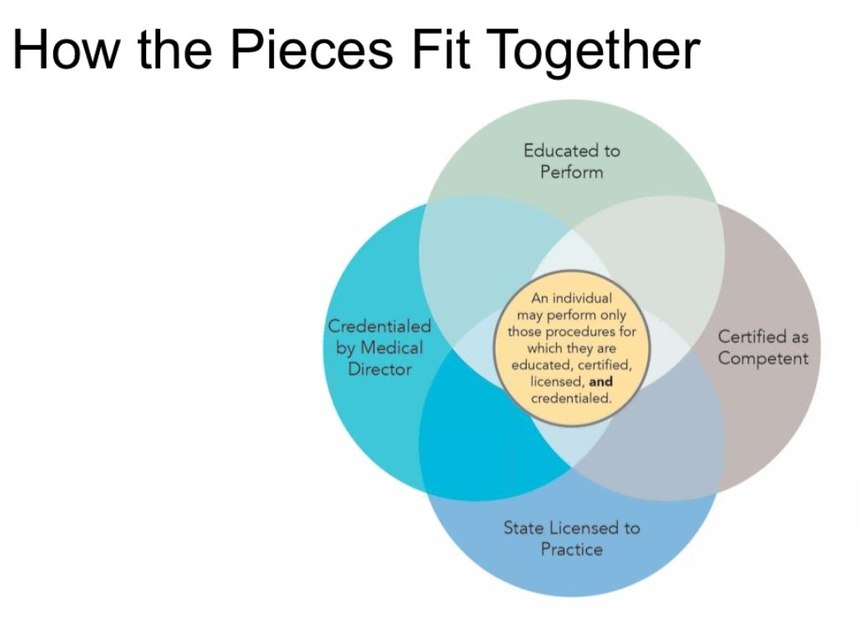EMS Education
Published .

The point of section is to explain how the curriculum (the plan the instructor uses to deliver the course) is developed. At the National level, the National Highway Transportation Safety Administration (NHTSA) provides guidance for all levels of training in Emergency Medical Services (EMS) Training. A logical question would be, “what would a bunch of people who build highways and bridges know about EMS?”. The answer is the National Highway Safety Act of 1974 which stipulated EMS be provided for areas served by the Eisenhower Interstate System and left the direction of such activities to NHTSA.
https://www.ems.gov/partners.html
The Office of EMS provides support to the Federal Interagency Committee on EMS (FICEMS), which is a collaborative body focused on defining the direction of Federal research and initiatives to support the EMS community. The agencies listed above comprise the membership of FICEMS. This membership receives input from the appointed community representatives who comprise the National EMS Advisory Council (NEMSAC).
The Department of Transportation’s National Highway Traffic Safety Administration (NHTSA), through its Office of EMS reduces death and disability by providing leadership and coordination to the EMS community in assessing, planning, developing, and promoting comprehensive, evidence-based emergency medical services and 911 systems. Specifically, NHTSA partners with peer agencies to advance a National vision for EMS, and collects and analyzes the data EMS managers need to make critical decisions.
The scope of practice defines the healthcare services that a pre-hospital provider is authorized to perform by virtue of professional licensure. The scope of practice in Emergency Medical Services (EMS) is under the regulation of state-level licensure. To become licensed, an EMS provider must provide evidence of satisfactory completion of an accredited education program, a certification examination, and state licensure. For clarity, certification verifies a knowledge or experience base. Licensure bestows permission to perform specific duties/skills.
Certification is a process where you meet the requirements for a certifying body to declare you are educated or trained. A person with said certification can obtain a license to practice issued by a government agency. In Georgia, EMS personnel take a National Registry exam to be certified and then obtain a license through the Georgia Department of Public Health.
Each level of EMS provider has a defined scope of practice that gets delineated in the National Highway and Traffic Safety Administration (NHTSA), The National EMS Scope of Practice Model. This scope was developed based on a uniform educational curriculum and included knowledge and skills critical to each level of care, meaning any provider with that level of certification and licensure should be equipped to perform these skills.
The scope of practice model defines four levels of pre-hospital provider:
- Emergency Medical Responder (not licensed in Georgia but trained by certified instructors)
- Emergency Medical Technician (licensed in Georgia)
- Advanced Emergency Medical Technician (licensed in Georgia)
- Paramedic (licensed in Georgia)
Description of the Profession
The primary focus of the Advanced Emergency Medical Technician is to provide basic and limited advanced emergency medical care and transportation for critical and emergent patients who access the emergency medical system. This individual possesses the basic knowledge and skills necessary to provide patient care and transportation.
Advanced Emergency Medical Technicians function as part of a comprehensive EMS response, under medical oversight. Advanced Emergency Medical Technicians perform interventions with the basic and advanced equipment typically found on an ambulance. The Advanced Emergency Medical Technician is a link from the scene to the emergency
health care system.
Educational Requirements: One of the eligibility requirements for licensure at this level requires successful completion of an accredited Advanced Emergency Medical Technician course.
